by TRA
The History of the Pentacon Six
The Pentacon Six TL
Dates: 1969-1990 (confirmed by CB)

One of the first of the cameras with the name “Pentacon
Six TL”.
An original Pentacon Six front plate has clearly been
used, with the
“TL” subsequently added.
The Biometar lens on this example was part of a batch
that was finished
on 1st April 1968
[C396_13.jpg]
Features
The only change to the camera was the name, which reflected the availability from 1968 on of a TTL metering prism.
As can be seen above, the first examples of the Pentacon Six TL use a standard Pentacon Six face plate, to which the letters “TL” have been added below the name. Eventually (presumably once the stock of those face plates had been exhausted!), a new face plate design was used with the whole name in one line of text.
Export Version
| Since the late 1940s, the key
export market for East
German companies had been the United States of
America, where the first
Contax S cameras had been sold for up to US$800,
an extraordinarily high
price, especially considering that the first
cameras arrived minus the
delayed-action mechanism and lever and that the
first batches needed a
lot of care and attention (i.e., a significant
proportion proved mechanically
unreliable). In the 1950s, KW’s Praktinas
were also strongly promoted
in the USA.
Americans were extremely keen to get quality German cameras, but had misgivings about buying from the Eastern Sector of Germany. By the early 1950s, US government and import regulations required that such equipment be re-labelled “Germany (USSR occupied)” or “Germany (Russian Sector)”. By the 1960s, the former Soviet zone of Germany was calling itself the “German Democratic Republic” or “GDR” (in German: “Deutsche Democratische Republik” or “DDR”), and cameras and lenses were labelled accordingly. But the Berlin wall had been erected by the communist authorities on 13 August 1963, and relationships between communist countries and the USA were extremely poor. The “GDR” had to find ways of getting round American resistance to buying communist goods. In addition, there was a long-running series of court battles in various countries over the rights to use the name “Carl Zeiss” and lens names such as “Biometar” and “Sonnar”. Eventually, the East Germans lost the right to use these names in various countries, including the USA. The manufacturers of the Pentacon Six and of Carl Zeiss lenses sought to get round these problems in the easiest way possible. The image on the right shows the same camera as the one illustrated at the top of this page. |
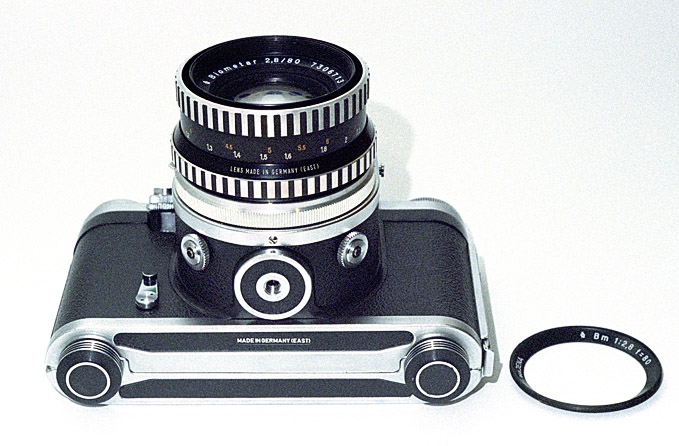
Pentacon Six TL prepared for export to the USA [C396_14.jpg]
|
|
| You can
read more about the settlement conditions of the
legal dispute between the two Carl Zeiss
companies here. |
||
| Labelling of lenses and bodies
for export to the USA
and some other countries in the late 1960s.
However, even all this subterfuge was not enough to overcome resistance to a camera that was known to come from communist East Germany, and so a new version of the camera was born, or at least, a new name for it. (See next page.) |
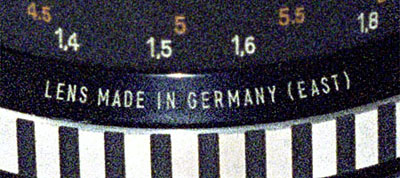 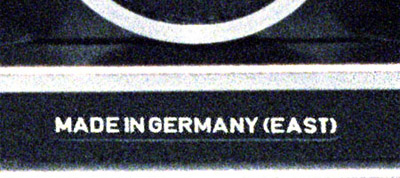
Enlargements from the lens and the camera baseplate in the above photograph |
Extra feature
They also added a feature that had been possible for all models since the design of the the Praktisix, but never incorporated until this point: separate “X” and “FP” flash sockets (for electronic flashguns and Focal Plane flash bulbs, respectively), as FP flashguns continued to be very popular in the USA.
Variations

[C396_15.jpg] The slightly later Pentacon Six TL shown here has the new-style face plate. It, too, has been prepared for export to a country where the name “Carl Zeiss” cannot be used, as can be seen from the name ring on the lens. |
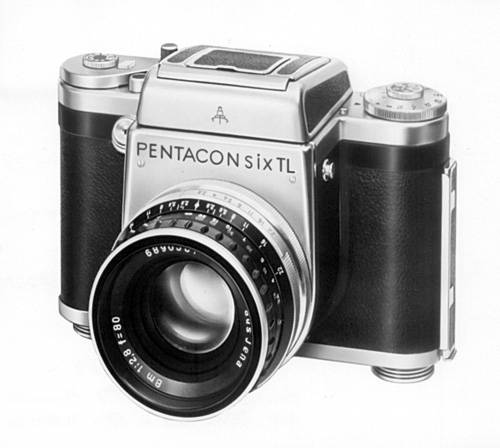
[6tlfacpic1.jpg] This picture supplied to me in 1981 by the factory shows a 1960s camera with larger lettering on the camera face plate. The uncommon lens style with “bumps” on the focussing ring can also be seen on this image, and an export ring has been added to the lens, perhaps so that the picture could be used in certain markets. |
In the subsequent decades, there was no further technological development of the camera, and only cosmetic changes can be observed. Thus from about 1972 the lens breech-lock ring on the body was black.
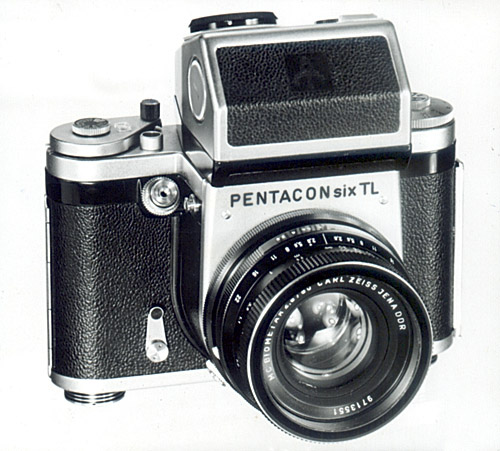
[6tlfacpic2.jpg]
This picture, which was also supplied to
me by the factory
in 1981, was labelled “Heutige Ausführung”, which,
roughly translated,
means “Current Version”.
The lens on this camera was part of a
batch of Biometars
that were completed on 11th October 1975.
Naturally, the metering prism is shown
fitted to this
camera.
Shutter Release
Button
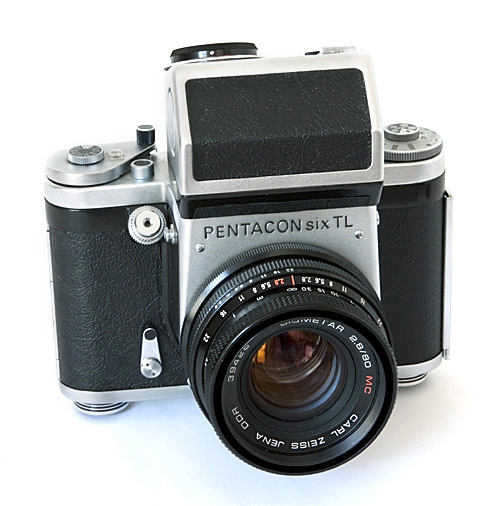
[May89_1.jpg] |
From about 1987 the concentric circles on the shutter release button that had been seen on this button since the Praktisix was first introduced in 1956/57 disappeared. In German, this smooth version is referred to as “Glattknopf”. The Exakta 66 (1980s-on version) also had a smooth shutter release button, no doubt produced by Pentacon, and I wonder if when sales of the Exakta 66 did not reach the hoped-for levels the Pentacon factory found itself with a surplus of such buttons and decided to use them on its own cameras. (Of course, the button was anodized black during the subsequent manufacturing process for the Exakta 66.) |
Base plate
Since the introduction of the Praktisix, the circular base plate round the tripod screw socket had had a disk of black leatherette. At the same time that the shutter release button ceased to have its concentric rings, this piece of leatherette was no longer applied. Compare with the base of the camera illustrated higher up on this page.
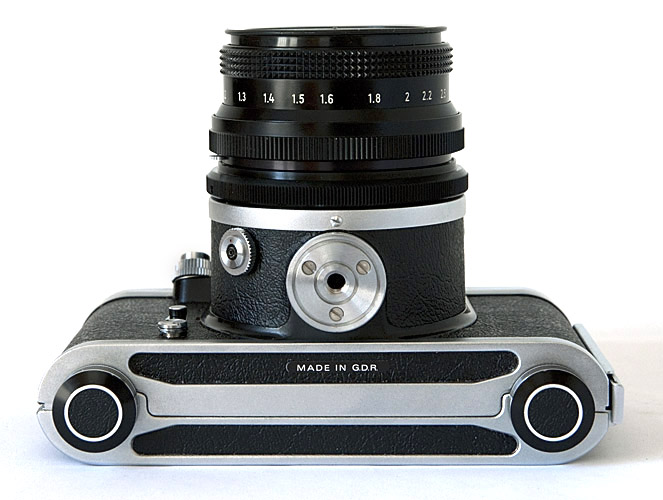
[May89_2.jpg]
To go to the Bibliography, click here.
To go on to the next section, click
below.
21 The Hanimex
Praktica 66
To go to the beginning of the history section, click here.
To go to introduction to the cameras, click here.
To choose other options, click below.
Home
© TRA August 2010 Latest revision with improved links: May 2020